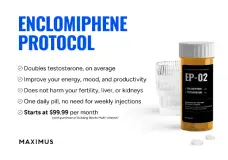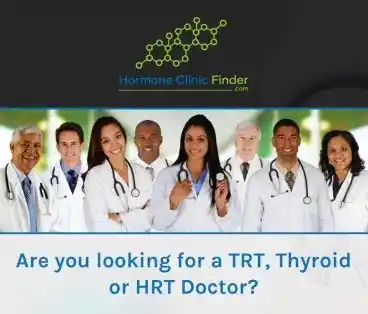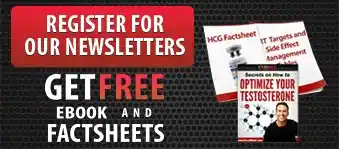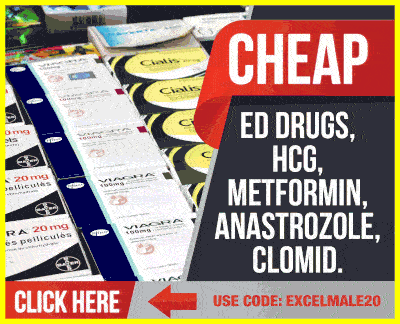Clomiphene citrate: A potential alternative for testosterone therapy in hypogonadal males (2023)
M. Huijben | M. T. W. T. Lock | V. F. de Kemp | J. J. H. Beck | L. M. O. De Kort | H. M. K. van Breda
Abstract
Background
Hypogonadism is a worldwide problem among men causing sexual, physical, and mental problems. Testosterone therapy is the first-choice treatment for male hypogonadism, with several side effects, that is, subfertility. Clomiphene citrate (CC) is an alternative off-label therapy for a certain group of hypogonadal males, especially for those with an active or future child wish. There is scarce literature on the usage of CC for men with hypogonadism. The aim of this retrospective study was to evaluate the effectiveness and safety of CC for hypogonadal males.

Methods
In this single-center study, men treated with CC for hypogonadism were evaluated retrospectively. The primary outcome was hormonal evaluation including total testosterone (TT), free testosterone (FT), luteinizing hormone (LH), and follicle-stimulating hormone (FSH). Secondary outcomes were hypogonadal symptoms, metabolic and lipid parameters, hemoglobin (Hb), hematocrit (Ht), prostate-specific antigen (PSA), side effects, the effect of a trial without medication, and potential predictors for biochemical and clinical response.
Results
In total, 153 hypogonadal men were treated with CC. Mean TT, FT, LH, and FSH increased during treatment. TT increased from 9 to 16 nmol/L, with a biochemical increase in 89% of the patients. In patients who continued CC treatment, an increased level of TT persisted after 8 years of treatment. With CC treatment, 74% of the patients experienced hypogonadal symptom improvement. LH at the lower normal range before CC treatment was predictive for better TT response. During CC therapy, few side effects were reported and no clinically important changes in PSA, Hb, and Ht were found.
Conclusion
Clomiphene citrate is an effective therapy in the short and long term, improving both clinical symptoms and biochemical markers of male hypogonadism with few side effects and good safety aspects.
1 | INTRODUCTION
Male hypogonadism is a biochemical and clinical testosterone deficiency syndrome with a prevalence of symptomatic hypogonadism ranging between 2.1% and 5.7% in males aged above 30 years of age.1–4
Prevalence increases with age and certain comorbidities, such as cardiovascular disease, diabetes mellitus (DM), obesity, and malignancies.2,5 Decreased libido, lack of energy, mood changes, decreased muscle mass, and erectile dysfunction are common hypogonadal symptoms.6,7 Testosterone therapy (TTh) is the treatment of the first choice for male hypogonadism.8 However, exogenous testosterone leads to negative feedback on the hypothalamic–pituitary–gonadal (HPG) axis, causing suppression of endogenous testosterone production and spermatogenesis.9 Other side effects are, changed lipid serum, polycythemia, and gynecomastia.9–11
Clomiphene citrate (CC) is an alternative off-label pharmacological treatment for a certain group of males with hypogonadism. CC is a selective estrogen receptor modulator, occupying estrogen receptors in the hypothalamus and pituitary gland, leading to increased secretion of luteinizing hormone (LH) and follicle-stimulating hormone (FSH) and so, stimulating testicular endogenous testosterone production and preserving spermatogenesis.12,13
Since the 1960s, CC has been often used for ovulation induction in females. For males, the United States Food and Drug Administration (FDA) did not approve the medicine with the reason of unclear clinical effects because of the lack of well-controlled and well-powered controlled trials.14–17 However, CC is described over more than 30 years off-label to hypogonadal men, especially those with an active or future child wish, or hypogonadal males who do not want to use TTh.18 Compared to TTh, CC is easy to use and comes with little cost. For example, in our country, costs of CC are about 12 times lower than regular TTh.19
*To support the outcomes in the scarce literature on the efficacy of CC therapy, the purpose of this retrospective study was to evaluate the effectiveness and safety of CC therapy for male hypogonadism.
4 | DISCUSSION
This study is supporting evidence for the long-term efficacy of CC in hypogonadal males with increases in total testosterone, free testosterone, and gonadotrophins and a total biochemical increase in TT in 89% of the patients. Therewithal, in 74% of patients, a clinical effect was observed as described as an improvement of hypogonadal symptoms with CC therapy. In total 81% of the patients had both a biochemical and clinical response. This study is, to our knowledge, the first large retrospective cohort study on both clinical and biochemical effects of CC in hypogonadal males with long follow-up and identification of potential predictors for success.
Levels of TT, FT, LH, FSH, and SHBG increased after starting the treatment. Increased testosterone levels lasted with ongoing treatment until 8 years of FU. This improvement of hormone levels has been described in previous studies, showing TT at baseline ranging between 7 and 11 nmol/L and at first measurement during treatment ranging between 16 and 24 nmol/L (n = 34–400).21–24 The results of testosterone and gonadotrophins show that CC is effective in increasing endogenous testosterone secretion by stimulating the HPG axis in hypogonadal men. Only 10% of our study population was biochemical non-responder, all these patients stopped CC therapy during the first 6 months. In the study, the mean LH before treatment was 4.7 IU/L in the responder group and 13.7 IU/L in the non-responder group. Of the 16 patients with hypergonadotropic patients, six were biochemical responders. Of which, the patient with Klinefelter who showed a biochemical and symptomatic improvement.
For further research and practice it is important to be critical about who to include or to prescribe CC therapy. However, with these results, it could be considered to try CC therapy also in hypergonadotropic patients. Although, it could be recommended then to do an early testosterone measurement, to evaluate the biochemical response and for early detection of a potential reversed effect. Furthermore, it is debatable if patients with TT levels >12 nmol/L and < 15 nmol/L should be included. However, in all these eight patients there was a biochemical improvement, and in six of them (75%) there was a clinical improvement (increased libido). Considering of inclusion of these patients is supported by the study of Zitzmann (2006), showing that testosterone deficiency symptoms may also be seen with TT levels as high as 15 nmol/L.25
It is unknown whether CC is effective in the long term. In our study, there was a sustained biochemical effect of CC, with the longest long-term FU of 8 years. Three earlier studies (n = 29–120) indicated that after 24–52 months of CC use, hormone levels were stable.21,26,27 It is worth focusing on the 52 patients who underwent a TWM to gain further insight into this long-term effect. In the current study, there was a decrease in TT levels <15 nmol/L after stopping CC in 94% of the patients and in 65% of the patients <12.1 nmol/L. This effect was also seen by Marconi et al. (2016) (n = 27) demonstrating during a trial without CC therapy that 78% of the patients had decreased TT levels of <10 nmol/ after 3 months, and all patients had decreased TT levels of <10 nmol/L after 6 months.28 Remarkably, only 38% of patients in the current study reported worsening of hypogonadal symptoms while on TWM and only 32% of the TWM patients continued CC therapy after TWM. Furthermore, in the current study, 33% of patients ceased CC treatment in the first year and almost half of them by the end of the study, with no correlation between discontinuation in the first year and pre-treatment TT levels, age, or hypogonadism etiology. Despite the improvement of TT levels, the most mentioned reason for stopping was that patients did not experience enough effects of CC treatment. A possible explanation for not continuing CC therapy after TWM is that the symptoms were not impeding them as much as they did before treatment started and during the first time of treatment. Either, the symptoms were mild or the patient's life or relational situation changed and the hypogonadal symptoms hindered them less than before and not enough to take long-term medication. Further studies should consider stricter inclusion criteria such as low testosterone levels (<12.1 nmol/L) and use validated symptom questionnaires to objective symptom severity.
Furthermore, this retrospective study is the first study showing that a better early response to TT is correlated with a better clinical response. The study also shows that low-normal LH before treatment predicted symptom improvement and a higher increase in TT during CC treatment. This potential predictor was also seen in the study of Mazzola et al. (2014).29 Without any confirmed mechanism, it is hypothesized that low normal range LH levels demonstrate a better potential for stimulating Leydig cells by CC. Further predictors were demonstrated by Guay et al. (2003) (n = 178) who showed that younger age (<55 years) and absence of diabetes is a predictor for better TT response.30 This was not seen in our study. In another study, specific enzymes like CYP450 D26 were suggested as predictors for TT response.31 In our study those enzymes were not measured. Also in earlier studies on CC, CYP450 D26 was not measured.
Side effects were reported in 10% of our population and included agitation, hot flushes, nipple tenderness, mood changes, weight gain, visual changes, headache, and dizziness. These side effects were also reported in the literature, with a prevalence between 4% and 11%.21,23,31,32 Most patients with side effects continued CC after the TWM, suggesting that CC's benefits outweighed the side effects. Because of the off-label usage of CC, there are no existing guidelines for monitoring adverse events. Therefore, recommendations are based on experience with exogenous testosterone therapy. Literature shows that TTh can lead to an increase in PSA, Hb, and Ht.10,33 In our study we found no increase in PSA and Hb, only two patients showed marginal elevated Ht (0.50 and 0.51) during treatment. Baseline Ht levels were not available in these patients, so it is unclear if this elevated Ht was pre-existent. This was supported by Chandrapal et al. (2016) who demonstrated no increase in PSA, Hb, and Ht during CC therapy (n = 77).34 This was further supported by Krzastek et al. (2019) (n = 76), who found only one patient with increased Ht (0.51) during CC therapy.21 Wheeler et al. (2017) demonstrated a difference in the prevalence of increased Ht with CC and TTh of 2% and 11%, respectively (n = 363).35 A hypothesis is, that rapid peak increases in TT and overdosing of TT, especially in TTh injections, can lead to a treatment-induced increase in Hb and Ht.36 Thus, this does not apply to CC therapy, with a slow increase in endogenous TT. However, CC can have an estrogen agonistic activity, leading to activation of clotting factors, leading to an increased coagulability, with an increased risk of thromboembolic events.37 Although, with this theoretical risk in mind, Kavoussi et al. (2019) showed that the risk of deep venous thrombosis was not increased with CC compared to the general population (n = 1180)38 It could be considered that patients should be counseled that there are some described cases of thromboembolic events without the knowledge of this was caused by CC. Furthermore, it could be considered that elevated hematocrit before treatment or thromboembolic events in the past are contraindications. In our study, an increase in estradiol was only seen in (1/13) patients where estradiol was measured before and during treatment, in contrast with previous studies.21,22,29,31 A possible explanation could be that estradiol was measured in only a small number of our study population (n = 13).
A reversed effect of CC on testosterone levels was found in two young hypergonadotropic patients (<1%). Although this phenomenon has been described before in the literature, the physiology of this paradoxical effect of CC is unclear.21,39,40
There are several limitations to address for this study. First, it has a retrospective character, with data obtained manually from patient files. There were no strict inclusion criteria with predefined baseline and outcome measurements. No validated instrument for reporting hypogonadal symptoms could be used because there does not exist a Dutch-validated hypogonadism questionnaire, but self-reported hypogonadal symptoms and subjective symptom improvement were evaluated during follow-up. Second, because this was not a placebo-controlled trial, it is difficult to conclude if clinical improvement is the result of CC therapy. Third, in 130 patients, the presence of side effects was not reported, and side effects were not systematically classified. This may have caused an underestimation of the actual prevalence of side effects. Fourth, dosage at the start of therapy was chosen based on weight, based on expert opinion in 2012. For future research and for clinical practice it is recommended with this gap in knowledge to start with the minimal dosage not depending on weight and to titrate the dosage up if there is no sufficient effect. As last to mention, the included patients had different origins of hypogonadism. This is causing heterogeneity and does not imply that the effect of the study does count for all different subgroups. Nevertheless, with the encouraging outcomes of this study, we believe it is very valuable to execute a prospective study, especially for young hypogonadal males with an active or potential future child wish who are not eligible for TTh, with clear inclusion criteria, adequate measurement of hormonal levels, symptomatology with the usage of a validated questionnaire and registration of side effects.
5 | CONCLUSION
Clomiphene citrate therapy for hypogonadal males shows promising effects on both clinical symptoms and biochemical testosterone insufficiency with few reported side effects and good safety aspects compared with TTh. Therefore, it is worth to be considered especially in males presenting with symptoms of hypogonadism and low testosterone who wish to preserve their testicular function and are not eligible for TTh. Low to normal LH at baseline seems to predict biochemical and clinical effectiveness. Further research with clear inclusion criteria, adequate measurement of hormonal levels, and registration of symptoms and side effects are recommended.
M. Huijben | M. T. W. T. Lock | V. F. de Kemp | J. J. H. Beck | L. M. O. De Kort | H. M. K. van Breda
Abstract
Background
Hypogonadism is a worldwide problem among men causing sexual, physical, and mental problems. Testosterone therapy is the first-choice treatment for male hypogonadism, with several side effects, that is, subfertility. Clomiphene citrate (CC) is an alternative off-label therapy for a certain group of hypogonadal males, especially for those with an active or future child wish. There is scarce literature on the usage of CC for men with hypogonadism. The aim of this retrospective study was to evaluate the effectiveness and safety of CC for hypogonadal males.
Methods
In this single-center study, men treated with CC for hypogonadism were evaluated retrospectively. The primary outcome was hormonal evaluation including total testosterone (TT), free testosterone (FT), luteinizing hormone (LH), and follicle-stimulating hormone (FSH). Secondary outcomes were hypogonadal symptoms, metabolic and lipid parameters, hemoglobin (Hb), hematocrit (Ht), prostate-specific antigen (PSA), side effects, the effect of a trial without medication, and potential predictors for biochemical and clinical response.
Results
In total, 153 hypogonadal men were treated with CC. Mean TT, FT, LH, and FSH increased during treatment. TT increased from 9 to 16 nmol/L, with a biochemical increase in 89% of the patients. In patients who continued CC treatment, an increased level of TT persisted after 8 years of treatment. With CC treatment, 74% of the patients experienced hypogonadal symptom improvement. LH at the lower normal range before CC treatment was predictive for better TT response. During CC therapy, few side effects were reported and no clinically important changes in PSA, Hb, and Ht were found.
Conclusion
Clomiphene citrate is an effective therapy in the short and long term, improving both clinical symptoms and biochemical markers of male hypogonadism with few side effects and good safety aspects.
1 | INTRODUCTION
Male hypogonadism is a biochemical and clinical testosterone deficiency syndrome with a prevalence of symptomatic hypogonadism ranging between 2.1% and 5.7% in males aged above 30 years of age.1–4
Prevalence increases with age and certain comorbidities, such as cardiovascular disease, diabetes mellitus (DM), obesity, and malignancies.2,5 Decreased libido, lack of energy, mood changes, decreased muscle mass, and erectile dysfunction are common hypogonadal symptoms.6,7 Testosterone therapy (TTh) is the treatment of the first choice for male hypogonadism.8 However, exogenous testosterone leads to negative feedback on the hypothalamic–pituitary–gonadal (HPG) axis, causing suppression of endogenous testosterone production and spermatogenesis.9 Other side effects are, changed lipid serum, polycythemia, and gynecomastia.9–11
Clomiphene citrate (CC) is an alternative off-label pharmacological treatment for a certain group of males with hypogonadism. CC is a selective estrogen receptor modulator, occupying estrogen receptors in the hypothalamus and pituitary gland, leading to increased secretion of luteinizing hormone (LH) and follicle-stimulating hormone (FSH) and so, stimulating testicular endogenous testosterone production and preserving spermatogenesis.12,13
Since the 1960s, CC has been often used for ovulation induction in females. For males, the United States Food and Drug Administration (FDA) did not approve the medicine with the reason of unclear clinical effects because of the lack of well-controlled and well-powered controlled trials.14–17 However, CC is described over more than 30 years off-label to hypogonadal men, especially those with an active or future child wish, or hypogonadal males who do not want to use TTh.18 Compared to TTh, CC is easy to use and comes with little cost. For example, in our country, costs of CC are about 12 times lower than regular TTh.19
*To support the outcomes in the scarce literature on the efficacy of CC therapy, the purpose of this retrospective study was to evaluate the effectiveness and safety of CC therapy for male hypogonadism.
4 | DISCUSSION
This study is supporting evidence for the long-term efficacy of CC in hypogonadal males with increases in total testosterone, free testosterone, and gonadotrophins and a total biochemical increase in TT in 89% of the patients. Therewithal, in 74% of patients, a clinical effect was observed as described as an improvement of hypogonadal symptoms with CC therapy. In total 81% of the patients had both a biochemical and clinical response. This study is, to our knowledge, the first large retrospective cohort study on both clinical and biochemical effects of CC in hypogonadal males with long follow-up and identification of potential predictors for success.
Levels of TT, FT, LH, FSH, and SHBG increased after starting the treatment. Increased testosterone levels lasted with ongoing treatment until 8 years of FU. This improvement of hormone levels has been described in previous studies, showing TT at baseline ranging between 7 and 11 nmol/L and at first measurement during treatment ranging between 16 and 24 nmol/L (n = 34–400).21–24 The results of testosterone and gonadotrophins show that CC is effective in increasing endogenous testosterone secretion by stimulating the HPG axis in hypogonadal men. Only 10% of our study population was biochemical non-responder, all these patients stopped CC therapy during the first 6 months. In the study, the mean LH before treatment was 4.7 IU/L in the responder group and 13.7 IU/L in the non-responder group. Of the 16 patients with hypergonadotropic patients, six were biochemical responders. Of which, the patient with Klinefelter who showed a biochemical and symptomatic improvement.
For further research and practice it is important to be critical about who to include or to prescribe CC therapy. However, with these results, it could be considered to try CC therapy also in hypergonadotropic patients. Although, it could be recommended then to do an early testosterone measurement, to evaluate the biochemical response and for early detection of a potential reversed effect. Furthermore, it is debatable if patients with TT levels >12 nmol/L and < 15 nmol/L should be included. However, in all these eight patients there was a biochemical improvement, and in six of them (75%) there was a clinical improvement (increased libido). Considering of inclusion of these patients is supported by the study of Zitzmann (2006), showing that testosterone deficiency symptoms may also be seen with TT levels as high as 15 nmol/L.25
It is unknown whether CC is effective in the long term. In our study, there was a sustained biochemical effect of CC, with the longest long-term FU of 8 years. Three earlier studies (n = 29–120) indicated that after 24–52 months of CC use, hormone levels were stable.21,26,27 It is worth focusing on the 52 patients who underwent a TWM to gain further insight into this long-term effect. In the current study, there was a decrease in TT levels <15 nmol/L after stopping CC in 94% of the patients and in 65% of the patients <12.1 nmol/L. This effect was also seen by Marconi et al. (2016) (n = 27) demonstrating during a trial without CC therapy that 78% of the patients had decreased TT levels of <10 nmol/ after 3 months, and all patients had decreased TT levels of <10 nmol/L after 6 months.28 Remarkably, only 38% of patients in the current study reported worsening of hypogonadal symptoms while on TWM and only 32% of the TWM patients continued CC therapy after TWM. Furthermore, in the current study, 33% of patients ceased CC treatment in the first year and almost half of them by the end of the study, with no correlation between discontinuation in the first year and pre-treatment TT levels, age, or hypogonadism etiology. Despite the improvement of TT levels, the most mentioned reason for stopping was that patients did not experience enough effects of CC treatment. A possible explanation for not continuing CC therapy after TWM is that the symptoms were not impeding them as much as they did before treatment started and during the first time of treatment. Either, the symptoms were mild or the patient's life or relational situation changed and the hypogonadal symptoms hindered them less than before and not enough to take long-term medication. Further studies should consider stricter inclusion criteria such as low testosterone levels (<12.1 nmol/L) and use validated symptom questionnaires to objective symptom severity.
Furthermore, this retrospective study is the first study showing that a better early response to TT is correlated with a better clinical response. The study also shows that low-normal LH before treatment predicted symptom improvement and a higher increase in TT during CC treatment. This potential predictor was also seen in the study of Mazzola et al. (2014).29 Without any confirmed mechanism, it is hypothesized that low normal range LH levels demonstrate a better potential for stimulating Leydig cells by CC. Further predictors were demonstrated by Guay et al. (2003) (n = 178) who showed that younger age (<55 years) and absence of diabetes is a predictor for better TT response.30 This was not seen in our study. In another study, specific enzymes like CYP450 D26 were suggested as predictors for TT response.31 In our study those enzymes were not measured. Also in earlier studies on CC, CYP450 D26 was not measured.
Side effects were reported in 10% of our population and included agitation, hot flushes, nipple tenderness, mood changes, weight gain, visual changes, headache, and dizziness. These side effects were also reported in the literature, with a prevalence between 4% and 11%.21,23,31,32 Most patients with side effects continued CC after the TWM, suggesting that CC's benefits outweighed the side effects. Because of the off-label usage of CC, there are no existing guidelines for monitoring adverse events. Therefore, recommendations are based on experience with exogenous testosterone therapy. Literature shows that TTh can lead to an increase in PSA, Hb, and Ht.10,33 In our study we found no increase in PSA and Hb, only two patients showed marginal elevated Ht (0.50 and 0.51) during treatment. Baseline Ht levels were not available in these patients, so it is unclear if this elevated Ht was pre-existent. This was supported by Chandrapal et al. (2016) who demonstrated no increase in PSA, Hb, and Ht during CC therapy (n = 77).34 This was further supported by Krzastek et al. (2019) (n = 76), who found only one patient with increased Ht (0.51) during CC therapy.21 Wheeler et al. (2017) demonstrated a difference in the prevalence of increased Ht with CC and TTh of 2% and 11%, respectively (n = 363).35 A hypothesis is, that rapid peak increases in TT and overdosing of TT, especially in TTh injections, can lead to a treatment-induced increase in Hb and Ht.36 Thus, this does not apply to CC therapy, with a slow increase in endogenous TT. However, CC can have an estrogen agonistic activity, leading to activation of clotting factors, leading to an increased coagulability, with an increased risk of thromboembolic events.37 Although, with this theoretical risk in mind, Kavoussi et al. (2019) showed that the risk of deep venous thrombosis was not increased with CC compared to the general population (n = 1180)38 It could be considered that patients should be counseled that there are some described cases of thromboembolic events without the knowledge of this was caused by CC. Furthermore, it could be considered that elevated hematocrit before treatment or thromboembolic events in the past are contraindications. In our study, an increase in estradiol was only seen in (1/13) patients where estradiol was measured before and during treatment, in contrast with previous studies.21,22,29,31 A possible explanation could be that estradiol was measured in only a small number of our study population (n = 13).
A reversed effect of CC on testosterone levels was found in two young hypergonadotropic patients (<1%). Although this phenomenon has been described before in the literature, the physiology of this paradoxical effect of CC is unclear.21,39,40
There are several limitations to address for this study. First, it has a retrospective character, with data obtained manually from patient files. There were no strict inclusion criteria with predefined baseline and outcome measurements. No validated instrument for reporting hypogonadal symptoms could be used because there does not exist a Dutch-validated hypogonadism questionnaire, but self-reported hypogonadal symptoms and subjective symptom improvement were evaluated during follow-up. Second, because this was not a placebo-controlled trial, it is difficult to conclude if clinical improvement is the result of CC therapy. Third, in 130 patients, the presence of side effects was not reported, and side effects were not systematically classified. This may have caused an underestimation of the actual prevalence of side effects. Fourth, dosage at the start of therapy was chosen based on weight, based on expert opinion in 2012. For future research and for clinical practice it is recommended with this gap in knowledge to start with the minimal dosage not depending on weight and to titrate the dosage up if there is no sufficient effect. As last to mention, the included patients had different origins of hypogonadism. This is causing heterogeneity and does not imply that the effect of the study does count for all different subgroups. Nevertheless, with the encouraging outcomes of this study, we believe it is very valuable to execute a prospective study, especially for young hypogonadal males with an active or potential future child wish who are not eligible for TTh, with clear inclusion criteria, adequate measurement of hormonal levels, symptomatology with the usage of a validated questionnaire and registration of side effects.
5 | CONCLUSION
Clomiphene citrate therapy for hypogonadal males shows promising effects on both clinical symptoms and biochemical testosterone insufficiency with few reported side effects and good safety aspects compared with TTh. Therefore, it is worth to be considered especially in males presenting with symptoms of hypogonadism and low testosterone who wish to preserve their testicular function and are not eligible for TTh. Low to normal LH at baseline seems to predict biochemical and clinical effectiveness. Further research with clear inclusion criteria, adequate measurement of hormonal levels, and registration of symptoms and side effects are recommended.
Last edited by a moderator:















